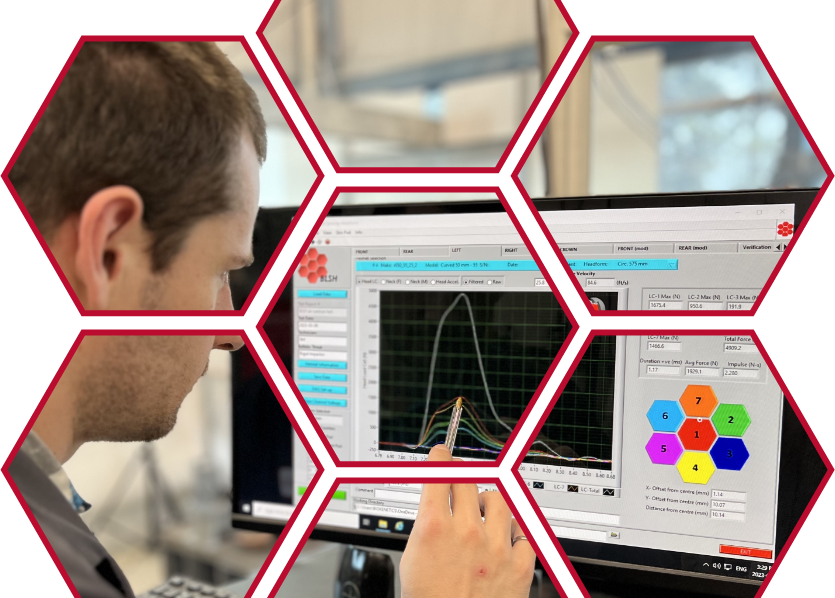Law enforcement and military branches across North America, Europe, and most of the globe are facing heavy scrutiny when it comes to the use of force, specifically when it comes to deploying ammunition or weaponry that carries a high risk of lethality. In a bid to reduce injuries to both officers and civilians, there have been increasing calls for the implementation and sustained use of less lethal methods and ammunition. While several studies show promising results for the use of less lethal ammunition, it is important to know that these projectiles are not devoid of risk and require ample testing, as well as rigorous standards to be utilized effectively and safely.
As a leading Canadian team that is well-versed in ballistic testing for both lethal and less-lethal ammunition, Biokinetics understands the crucial role that reliable testing plays in risk mitigation and effective crisis suppression. Below, we’ll examine some of the core factors assessed when determining the safe and effective use of less lethal ammunition. Read on to learn more.
Projectile Design and Material Composition
When discussing less lethal rounds, it’s crucial to be aware that there are two different categories utilized: deformable and non-deformable rounds.
Deformable rounds are designed to be deformable to minimize the risk of permanent injury or fatality. The deformability of these projectiles is a key feature that allows them to absorb or distribute some of the impact energy, reducing the risk of serious injury.
Non-deformable rounds maintain their shape upon impact, delivering a more direct force as a result. Knowing the difference between both rounds is crucial to understanding their performance and appropriate usage. Deformable rounds are often used for riot control, whereas non-deformable rounds are more commonly used for targeted deterrence.
When evaluating the projectile’s performance, the team at Biokinetics looks at a wide range of factors, including shape, size, and weight, to understand how these factors influence accuracy and interaction with the target. The charge is also evaluated to determine if the round adequately delivers the requisite kinetic energy to incapacitate or immobilize a target without causing undue harm.
Impact Kinetics and Energy Transfer
The transfer of kinetic energy upon impact contributes to the risk of injury (or fatalities) when it comes to any projectile, and thus, it is essential to understand the potential an object holds both in fight and upon contact. Less lethal projectile testing involves the thorough analysis of how projectiles interact with targets upon impact, assessing variables such as penetration depth, energy dispersion, blunt trauma and tissue damage. Quantifying these variables helps to reliably gauge the potential for target incapacitation while reducing the risk of severe injury or fatality, as well as other forms of collateral damage.
Accuracy and Precision
Precision targeting and accurate delivery are essential when it comes to minimizing collateral damage and unintended injuries. Ballistic testing helps to evaluate both of these elements through established test methods and can be expanded to involve of a wide variety of potential “real life” variables to assess how less-lethal rounds perform under diverse shooting conditions. Doing so helps to ensure safe and effective operational deployment without compromising safety.
Reliability and Consistency
Less lethal projectiles are used in highly contentious and dynamic scenarios, meaning that predictable, reliable, consistent performance is vital. Ballistic testing doesn’t just evaluate projectile force upon impact; it also assesses consistency in ignition, propulsion, and flight characteristics. Understanding these variables helps to identify potential malfunctions or performance deviations, which in turn inform performance variability and need for quality control measures to ensure standardized deployment measures.
User Training and Guidelines
Finally, as with any ammunition being deployed against vulnerable targets, it is crucial to ensure that operators are fully educated on the proper operation of all equipment, use-of-force protocols and guidelines to ensure operational effectiveness. Proper training and adherence to protocols that result from ballistic testing are non-negotiable for injury risk mitigation. By integrating the less-lethal performance evaluations in the lab with training practices and situational awareness and decision-making skills, we contribute to enhancing the overall safety and effectiveness of less lethal ammunition deployment.
Less Lethal Ballistic Testing and More with Biokinetics
For over 45 years, Biokinetics has partnered with industry leaders across North America to evaluate various aspects of ballistics testing, including non-lethal projectiles, in our fully equipped world-class laboratory. Our testing procedures adhere to industry standard specifications and can be tailored to meet the specific needs of your exact applications.
Contact us today to learn more!

